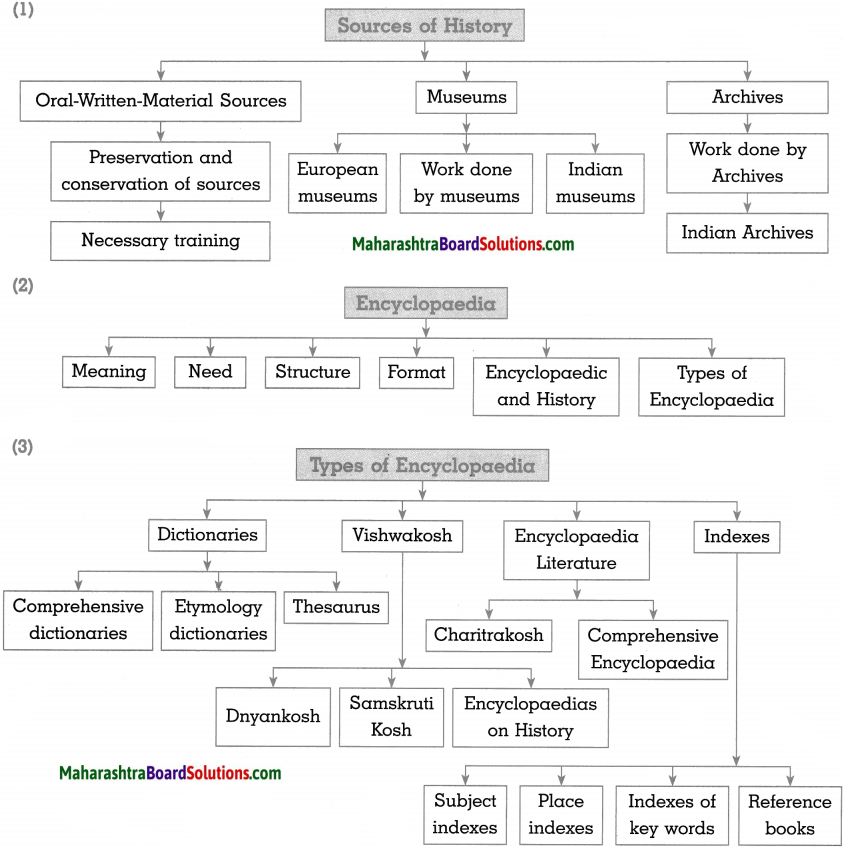Balbharti Maharashtra State Board Class 10 History Solutions
Chapter 9 Heritage Management Notes, Textbook Exercise Important Questions and Answers.
Question 1.
(A) Choose the correct option from the given options and complete the statement.
(1) Lovre Museum has in its collection the much-acclaimed painting of …………..…….. by Leonardo da Vinci.
(a) Napoleon
(b) Mona Lisa
(c) Hans Sloan
(d) George II
Answer:
(b) Mona Lisa

(2) …………..…….. at Kolkata is the first museum in India.
(a) Government Museum
(b) National Museum
(c) Chhatrapati Shivaji Maharaj Vastusangrahalay
(d) Indian Museum
Answer:
(d) Indian Museum
(B) Identify and write the wrong pair in the following set.
(1) Maharaja Sayajirao University – Delhi
(2) Banaras Hindu University – Varanasi
(3) Aligarh Muslim University – Aligarh
(4) Jivaji University – Gwalior
Answer:
(1) Wrong Pair: Maharaja Sayajirao University – Delhi
Question 2.
Explain the following statements with reasons.
(1) Archives and libraries publish research journals, informative pamphlets, leaflets, posters, etc.
Answer:
In order to make the historical events, personalities, and historical research known to the people, archives and libraries publish research journals, informative pamphlets and leaflets.
(2) Only trained persons, who are duly qualified can take up the tasks involved in the work of conservation and preservation.
Answer:

Question 3.
Write notes:
(1) Sthalakosh
Answer:
(2) Vishwakosh
Answer:
(3) Samdnya Kosh
Answer:
(4) Saraswati Mahal Granthalay
Answer:

Question 4.
Give elaborate answers to the following.
(1) Why is library management important?
Answer:
Library is not just about a collection of books but managing it is equally important.
(2) Which tasks are important in archives management?
Answer:
The following tasks are important in archives’ management:
Question 5.
Complete the following Concept chart.
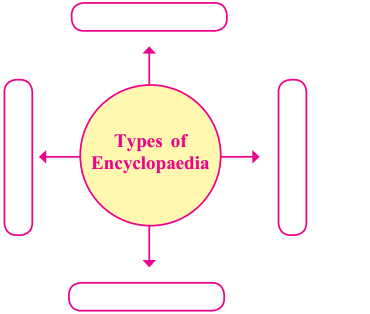
Answer:
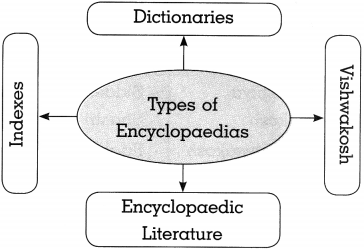

Project
Obtain information about the important libraries in Maharashtra. Visit the library in your vicinity and learn about its functioning.
Question 6.
Complete the sentences by choosing the correct option:
(a) Documents and artefacts which are not exhibited are kept in …………………… .
(a) Museum
(b) Library
(c) Archives
(d) Government office
Answer:
(c) Archives
(b) ……………………. was the 16th century artist who worked under the patronage of French King Francis I.
(a) Leonardo-da-Vinci
(b) Michaelangelo
(c) Raphael
(d) Dante
Answer:
(a) Leonardo-da-Vinci
(c) The collection in ……………………. increased to a great extent because of the antiquities brought by Napoleon Bonaparte.
(a) National Museum of Natural History
(b) British Museum
(c) Louvre Museum
(d) The Calico Museum
Answer:
(c) Louvre Museum.
(d) ……………………., a natural scientist handed over about 71 thousand objects in his collection to the British Museum.
(a) Sir Hans Sloan
(b) King George II
(c) Napoleon Bonaparte
(d) King Francis I
Answer:
(a) Sir Hans Sloan
(e) The Museum of Natural History which 8 houses more than 12 crore specimens of fossils is in ……………………. .
(a) England
(b) France
(c) Switzerland
(d) USA.
Answer:
(d) USA
(f) Chhatrapati Shivaji Maharaj Vastu-sangrahalay was built to commemorate the visit of ……………………. .
(a) King George I
(b) Queen Elizabeth
(c) Prince Charles
(d) Prince of Wales
Answer:
(c) Prince of Wales
(g) The building of Chhatrapati Shivaji Maharaj Vastusangrahalay is built in ……………………. style.
(a) Mughal
(b) Indo-Greek
(c) Indo-Gothic
(d) Indo-Persian
Answer:
(c) Indo-Gothic

(h) ……………………. is given status of Grade I heritage building in Mumbai.
(a) Chhatrapati Shivaji Maharaj Railway Terminus
(b) Chhatrapati Shivaji Maharaj Vastusangrahalay
(c) Reserve Bank of India
(d) Jehangir Art Gallery
Answer:
(b) Chhatrapati Shivaji Maharaj Vastusangrahalay.
(i) The Royal Library of Ashurbanipal, the ……………………….. Emperor in Mesopotamia is one of the earliest libraries in the world.
(a) Hispanic
(b) Assyrian
(c) Mongol
(d) Akkadian
Answer:
(b) Assyrian
(j) The ……………………….. in Thanjavur, Tamil Nadu was built in 16th-17th century during the times of Nayak dynasty.
(a) Vyankojiraje Bhosale
(b) Sarfojiraje Bhosale
(c) Saraswati Mahal Granthalay
(d) Vidya Niketan
Answer:
(c) Saraswati Mahal Granthalay
(k) The first official archives of India, the ……………………….. was established in 1891 C.E. in Kolkata.
(a) National Archive
(b) Federal Record of Nation
(c) Archive National
(d) Imperial Record Department
Answer:
(d) Imperial Record Department
(l) There are about five crore Modi documents related to Maratha history in the Pune branch which are referred as ………………………. .
(a) Peshwa Daftar
(b) Bhosale Daftar
(c) British Daftar
(d) Maratha Daftar
Answer:
(a) Peshwa Daftar
(m) ……………………….. prepared during the reign of Chhatrapati Shivaji Maharaj is considered as an important encyclopaedia.
(a) Bharatiya Vyavahar Kosh
(b) Rajavyavaharkosh
(c) Vyavaharik Kosh
(d) Bharatiya Prachin Charitrakosh
Answer:
(b) Rajavyavaharkosh.

Question 7.
Identify the wrong pair in the following and write it:
(1)
Answer:
Wrong Pair: Maharaj Sayajirao University – Delhi.
(2)
Answer:
Wrong Pair: Bharatvarshiya Prachin Aitihasik Kosh – Shridhar Vyankatesh Ketkar
(3)
Answer:
Wrong Pair: Marathi Vishwakosh – Raghunath Bhaskar Godbole
(4)
Answer:
Wrong Pair: First Encyclopaedia of Natural History – Denis Diderot

Question 8.
Complete the following concept chart:
(1)
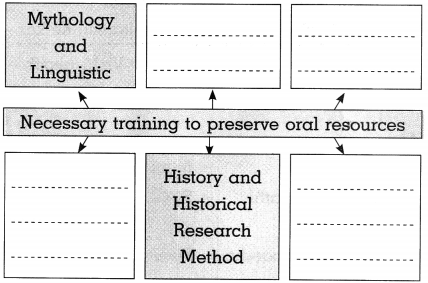
Answer:
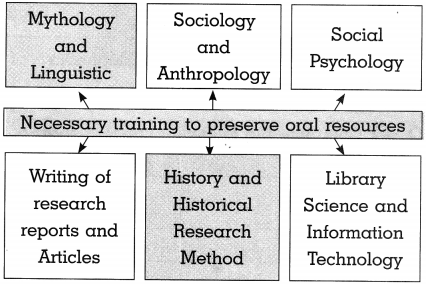
(2)
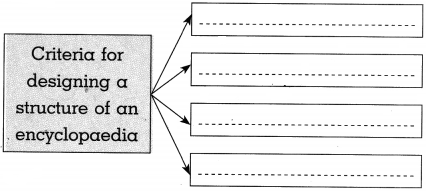
Answer:
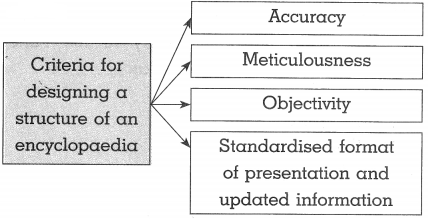
(3)
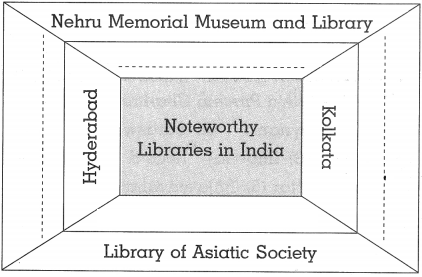
Answer:
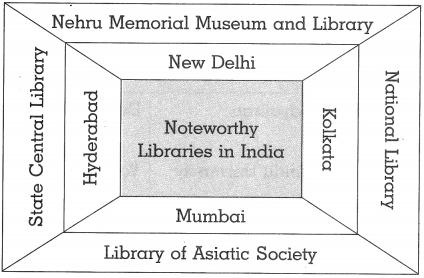

Question 9.
Explain the concept :
(a) Archives:
Answer:
(b) Encyclopaedia:
Answer:
(c) Dictionaries:
Answer:
(d) Comprehensive Encyclopaedia (Vishwakosh):
Answer:
(e) Index:
Answer:

(f) Charitrakosh (Encyclopaedia of Biographies):
Answer:
(g) Bharatiya Samskruti Kosh:
Answer:
Question 10.
Write short notes:
(a) Louvre Museum:
Answer:
(b) British Museum:
Answer:
(c) National Museum of Natural History:
Answer:
(d) Chhatrapati Shivaji Maharaj Vastusangrahalay:
Answer:

(e) Bharatvarshiya Prachin Aitihasik Kosh:
Answer:
(f) Bharatiya Samskruti Kosh:
Answer:
Therefore these koshs are useful for readers and research scholars.
Question 11.
Explain the following statements with reasons:
(a) Encyclopaedias should be created in as many languages as possible.
Answer:
Encyclopaedias symbolise the richness and vast gamut of words a language has.
(b) Encyclopaedia and history are related.
Answer:
(c) Improved versions of Encyclopaedia or supplements to original editions need to be published.
Answer:
Therefore, encyclopaedia or supplements to original editions need to be published.
Question 12.
Answer the following questions in 25-30 words:
(a) What are the ways to preserve and conserve oral resources?
Answer:

(b) What steps are taken to preserve written sources?
Answer:
Written sources have great importance in the writing of history. To preserve written sources we need –
(c) What methods should be followed while studying material source?
Answer:
The following methods should be followed by research scholars while studying material source:
(d) Write about the earliest libraries in the world.
Answer:
Libraries were established in different parts of the world in ancient times:
(e) Write about format of Encyclopaedias.
Answer:
Format of Encyclopaedias:
(f) Write about Encyclopaedic Literature.
Answer:

(g) Give information on early encyclopaedias made in the west.
Answer:
(h) Write about ancient Indian encyclopaedias.
Answer:
Question 13.
Read the following passage and answer the following questions:
(a) Which factors influence Encyclopaedia?
Answer:
The influence of national policies, ethical values and ideals, philosophy and traditions is seen in an encyclopaedia.
(b) What is the common factor between history and encyclopaedia?
Answer:
History and encyclopaedia both are objective.
(c) Explain the statement: Encyclopaedias are looked upon as outstanding achievements of a society.
Answer:
Hence encyclopaedias are looked upon as outstanding achievements of a society.
Question 14.
Give elaborate answers to the following: (3 marks each)
(a) What kind of training is required to study written sources?
Answer:
While studying and handling written sources the following training is required:

(b) What kind of training is required to study material sources?
Answer:
Student should have following knowledge to study material resource:
(c) Write information about museums in India.
Answer:
(d) Give information on “National Archives of India.
Answer:
(e) Explain the statement: A nation should have museums and libraries.
Answer:
Museums and libraries mirror the history of the country and that is the reason they are very valuable for a nation.

Hence it can be said that it is important for a nation to have museums and libraries as they both are symbols of nation’s progress and glory.
Chapter 9 Heritage Management Notes, Textbook Exercise Important Questions and Answers.
Question 1.
(A) Choose the correct option from the given options and complete the statement.
(1) Lovre Museum has in its collection the much-acclaimed painting of …………..…….. by Leonardo da Vinci.
(a) Napoleon
(b) Mona Lisa
(c) Hans Sloan
(d) George II
Answer:
(b) Mona Lisa
(2) …………..…….. at Kolkata is the first museum in India.
(a) Government Museum
(b) National Museum
(c) Chhatrapati Shivaji Maharaj Vastusangrahalay
(d) Indian Museum
Answer:
(d) Indian Museum
(B) Identify and write the wrong pair in the following set.
(1) Maharaja Sayajirao University – Delhi
(2) Banaras Hindu University – Varanasi
(3) Aligarh Muslim University – Aligarh
(4) Jivaji University – Gwalior
Answer:
(1) Wrong Pair: Maharaja Sayajirao University – Delhi
Question 2.
Explain the following statements with reasons.
(1) Archives and libraries publish research journals, informative pamphlets, leaflets, posters, etc.
Answer:
In order to make the historical events, personalities, and historical research known to the people, archives and libraries publish research journals, informative pamphlets and leaflets.
(2) Only trained persons, who are duly qualified can take up the tasks involved in the work of conservation and preservation.
Answer:
Question 3.
Write notes:
(1) Sthalakosh
Answer:
(2) Vishwakosh
Answer:
(3) Samdnya Kosh
Answer:
(4) Saraswati Mahal Granthalay
Answer:
Question 4.
Give elaborate answers to the following.
(1) Why is library management important?
Answer:
Library is not just about a collection of books but managing it is equally important.
(2) Which tasks are important in archives management?
Answer:
The following tasks are important in archives’ management:
Question 5.
Complete the following Concept chart.

Answer:

Project
Obtain information about the important libraries in Maharashtra. Visit the library in your vicinity and learn about its functioning.
Question 6.
Complete the sentences by choosing the correct option:
(a) Documents and artefacts which are not exhibited are kept in …………………… .
(a) Museum
(b) Library
(c) Archives
(d) Government office
Answer:
(c) Archives
(b) ……………………. was the 16th century artist who worked under the patronage of French King Francis I.
(a) Leonardo-da-Vinci
(b) Michaelangelo
(c) Raphael
(d) Dante
Answer:
(a) Leonardo-da-Vinci
(c) The collection in ……………………. increased to a great extent because of the antiquities brought by Napoleon Bonaparte.
(a) National Museum of Natural History
(b) British Museum
(c) Louvre Museum
(d) The Calico Museum
Answer:
(c) Louvre Museum.
(d) ……………………., a natural scientist handed over about 71 thousand objects in his collection to the British Museum.
(a) Sir Hans Sloan
(b) King George II
(c) Napoleon Bonaparte
(d) King Francis I
Answer:
(a) Sir Hans Sloan
(e) The Museum of Natural History which 8 houses more than 12 crore specimens of fossils is in ……………………. .
(a) England
(b) France
(c) Switzerland
(d) USA.
Answer:
(d) USA
(f) Chhatrapati Shivaji Maharaj Vastu-sangrahalay was built to commemorate the visit of ……………………. .
(a) King George I
(b) Queen Elizabeth
(c) Prince Charles
(d) Prince of Wales
Answer:
(c) Prince of Wales
(g) The building of Chhatrapati Shivaji Maharaj Vastusangrahalay is built in ……………………. style.
(a) Mughal
(b) Indo-Greek
(c) Indo-Gothic
(d) Indo-Persian
Answer:
(c) Indo-Gothic
(h) ……………………. is given status of Grade I heritage building in Mumbai.
(a) Chhatrapati Shivaji Maharaj Railway Terminus
(b) Chhatrapati Shivaji Maharaj Vastusangrahalay
(c) Reserve Bank of India
(d) Jehangir Art Gallery
Answer:
(b) Chhatrapati Shivaji Maharaj Vastusangrahalay.
(i) The Royal Library of Ashurbanipal, the ……………………….. Emperor in Mesopotamia is one of the earliest libraries in the world.
(a) Hispanic
(b) Assyrian
(c) Mongol
(d) Akkadian
Answer:
(b) Assyrian
(j) The ……………………….. in Thanjavur, Tamil Nadu was built in 16th-17th century during the times of Nayak dynasty.
(a) Vyankojiraje Bhosale
(b) Sarfojiraje Bhosale
(c) Saraswati Mahal Granthalay
(d) Vidya Niketan
Answer:
(c) Saraswati Mahal Granthalay
(k) The first official archives of India, the ……………………….. was established in 1891 C.E. in Kolkata.
(a) National Archive
(b) Federal Record of Nation
(c) Archive National
(d) Imperial Record Department
Answer:
(d) Imperial Record Department
(l) There are about five crore Modi documents related to Maratha history in the Pune branch which are referred as ………………………. .
(a) Peshwa Daftar
(b) Bhosale Daftar
(c) British Daftar
(d) Maratha Daftar
Answer:
(a) Peshwa Daftar
(m) ……………………….. prepared during the reign of Chhatrapati Shivaji Maharaj is considered as an important encyclopaedia.
(a) Bharatiya Vyavahar Kosh
(b) Rajavyavaharkosh
(c) Vyavaharik Kosh
(d) Bharatiya Prachin Charitrakosh
Answer:
(b) Rajavyavaharkosh.
Question 7.
Identify the wrong pair in the following and write it:
(1)
| (1) Maharaj Sayajirao University | Delhi |
| (2) Banaras Hindu University | Varanasi |
| (3) Aligarh Muslim University | Aligarh |
| (4) Jivaji University | Gwalior |
Wrong Pair: Maharaj Sayajirao University – Delhi.
(2)
| (1) Sangeetshastrakar va Kalavant Yancha Itiha£ | Lakshman Dattatray Joshi |
| (2) Krantikarakancha Charitrakosh | S. R. Date |
| (3) Svantantryasainik Charitrakosh | N. R. Phatak |
| (4) Bharatvarshiya Prachin Aitihasik Kosh | Shridhar Vyankatesh Ketkar |
Wrong Pair: Bharatvarshiya Prachin Aitihasik Kosh – Shridhar Vyankatesh Ketkar
(3)
| (1) Bharatvarshiya Charitrakosh | Siddeshwar Shastri Chitral |
| (2) Marathi Vishwakosh | Raghunath Bhaskar Godbole |
| (3) Bharatiya Samskruti Kosh | Pandit Mahadevshastri Joshi |
| (4) Maharashtriya Dnyankosh | Shridhar Vyankatesh Ketkar |
Wrong Pair: Marathi Vishwakosh – Raghunath Bhaskar Godbole
(4)
| (1) Sthanapothi | Muni Vyas |
| (2) Index of Marathi Periodicals | S. G. Date |
| (3) First Encyclopaedia of Natural History | Denis Diderot |
| (4) Asiatic Society of Bengal | First museum in India |
Wrong Pair: First Encyclopaedia of Natural History – Denis Diderot
Question 8.
Complete the following concept chart:
(1)

Answer:

(2)

Answer:

(3)

Answer:

Question 9.
Explain the concept :
(a) Archives:
Answer:
(b) Encyclopaedia:
Answer:
(c) Dictionaries:
Answer:
(d) Comprehensive Encyclopaedia (Vishwakosh):
Answer:
(e) Index:
Answer:
(f) Charitrakosh (Encyclopaedia of Biographies):
Answer:
(g) Bharatiya Samskruti Kosh:
Answer:
Question 10.
Write short notes:
(a) Louvre Museum:
Answer:
(b) British Museum:
Answer:
(c) National Museum of Natural History:
Answer:
(d) Chhatrapati Shivaji Maharaj Vastusangrahalay:
Answer:
(e) Bharatvarshiya Prachin Aitihasik Kosh:
Answer:
(f) Bharatiya Samskruti Kosh:
Answer:
Therefore these koshs are useful for readers and research scholars.
Question 11.
Explain the following statements with reasons:
(a) Encyclopaedias should be created in as many languages as possible.
Answer:
Encyclopaedias symbolise the richness and vast gamut of words a language has.
(b) Encyclopaedia and history are related.
Answer:
(c) Improved versions of Encyclopaedia or supplements to original editions need to be published.
Answer:
Therefore, encyclopaedia or supplements to original editions need to be published.
Question 12.
Answer the following questions in 25-30 words:
(a) What are the ways to preserve and conserve oral resources?
Answer:
(b) What steps are taken to preserve written sources?
Answer:
Written sources have great importance in the writing of history. To preserve written sources we need –
(c) What methods should be followed while studying material source?
Answer:
The following methods should be followed by research scholars while studying material source:
(d) Write about the earliest libraries in the world.
Answer:
Libraries were established in different parts of the world in ancient times:
(e) Write about format of Encyclopaedias.
Answer:
Format of Encyclopaedias:
(f) Write about Encyclopaedic Literature.
Answer:
(g) Give information on early encyclopaedias made in the west.
Answer:
(h) Write about ancient Indian encyclopaedias.
Answer:
Question 13.
Read the following passage and answer the following questions:
(a) Which factors influence Encyclopaedia?
Answer:
The influence of national policies, ethical values and ideals, philosophy and traditions is seen in an encyclopaedia.
(b) What is the common factor between history and encyclopaedia?
Answer:
History and encyclopaedia both are objective.
(c) Explain the statement: Encyclopaedias are looked upon as outstanding achievements of a society.
Answer:
Hence encyclopaedias are looked upon as outstanding achievements of a society.
Question 14.
Give elaborate answers to the following: (3 marks each)
(a) What kind of training is required to study written sources?
Answer:
While studying and handling written sources the following training is required:
(b) What kind of training is required to study material sources?
Answer:
Student should have following knowledge to study material resource:
(c) Write information about museums in India.
Answer:
(d) Give information on “National Archives of India.
Answer:
(e) Explain the statement: A nation should have museums and libraries.
Answer:
Museums and libraries mirror the history of the country and that is the reason they are very valuable for a nation.
Hence it can be said that it is important for a nation to have museums and libraries as they both are symbols of nation’s progress and glory.
Memory Map
